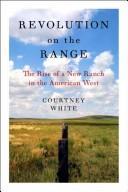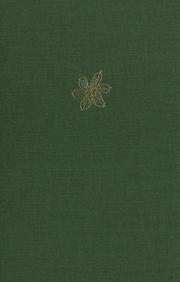| Listing 1 - 3 of 3 |
Sort by
|

ISBN: 1610911040 9781610911047 9781597261746 1597261742 Year: 2008 Publisher: Washington Island Press/Shearwater Books
Abstract | Keywords | Export | Availability | Bookmark
 Loading...
Loading...Choose an application
- Reference Manager
- EndNote
- RefWorks (Direct export to RefWorks)

ISBN: 1587292203 9781587292200 087745468X 9780877454687 0877454698 9780877454694 Year: 1994 Publisher: Iowa City : University of Iowa Press,
Abstract | Keywords | Export | Availability | Bookmark
 Loading...
Loading...Choose an application
- Reference Manager
- EndNote
- RefWorks (Direct export to RefWorks)
Iowa is the only state that lies entirely within the natural region of the tallgrass prairie. Early documents indicate that 95 percent of the state-close to 30 million acres-was covered by prairie vegetation at the time of Euro-American settlement. By 1930 the prairie sod had been almost totally converted to cropland; only about 30,000 acres of the original "great green sea" remained. Now, in this gracefully illustrated manual, Shirley Shirley has created a step-by-step guide to reconstructing the natural landscape of Iowa and the Upper Midwest.Chapters on planning, obtainin
Prairie restoration --- Prairie plants --- Prairie reconstruction --- Prairie renovation --- Prairies --- Reconstruction of prairies --- Renovation of prairies --- Restoration of prairies --- Grassland restoration --- Prairie flora --- Grassland plants --- Restoration --- Management
Book
ISBN: 1441974261 1489981756 144197427X Year: 2011 Publisher: New York, NY : Springer New York : Imprint: Springer,
Abstract | Keywords | Export | Availability | Bookmark
 Loading...
Loading...Choose an application
- Reference Manager
- EndNote
- RefWorks (Direct export to RefWorks)
Tallgrass Prarie Restoration in theMidwest and Eastern United States: A Hands-On Guide describes all aspects of restoring tallgrass prairie. Outlined are techniques from creating a prairie from scratch to improving diversity of existing prairies. The importance of selecting species for soil type is emphasized in this book. Methods are described for soil preparation, seed collection, seed treatment for germination, and planting rates. After creating a prairie, management is essential, such as safely conducting controlled burns and eliminating aggressive alien plants. Prairie restoration is essential, not only for aesthetic beauty, but prairies provide food for a variety of insects evolved to feed on our native plants. Insects in turn sustain a population of native birds, amphibians, and reptiles. Described in detail are over 200 species of grasses and forbs most commonly found in tallgrass prairies, most with accompanying photo illustrations. An appendix outlines about 900 additional species that are occasionally found on prairies. In addition, the Springer website illustrates detailed scanned herbarium samples and scanned seeds with accompanying seed-heads. These digitally scanned samples are invaluable for positive identification. This book is recommended for students, landscapers, horticulturists, hobbyists, and land managers. About the Author: Dr. Harold W. Gardner received a Ph.D. from Penn State University in biochemistry. His primary area of research was enzymatic oxidation of fatty acids, which serve as bio-signals in higher plants and fungi. Although his research took him to Hawaii, Sweden, California, and Illinois, he spent more than 30 years in Illinois where he became obsessed with attractive prairie eco-systems. Others joined him in prairie restoration efforts, eventually becoming known as the “Prairie Dawgs.” The Prairie Dawgs continue their dedication to prairie restoration in Illinois. Upon retirement to a farm in Pennsylvania, Gardner discovered that prairies also thrive in the East, where he manages about 20 acres of prairie.
Prairie restoration --- Prairie plants --- Prairie planting --- Prairies --- Restoration ecology. --- Ecological restoration --- Ecosystem restoration --- Rehabilitation ecology --- Restoration of ecosystems --- Prairie flora --- Prairie reconstruction --- Prairie renovation --- Reconstruction of prairies --- Renovation of prairies --- Restoration of prairies --- Management --- Restoration --- Life sciences. --- Agriculture. --- Ecosystems. --- Plant ecology. --- Ecology. --- Life Sciences. --- Plant Ecology. --- Terrestial Ecology. --- Grasslands --- Planting (Plant culture) --- Grassland plants --- Applied ecology --- Grassland restoration --- Endangered ecosystems. --- Threatened ecosystems --- Biotic communities --- Nature conservation --- Balance of nature --- Biology --- Bionomics --- Ecological processes --- Ecological science --- Ecological sciences --- Environment --- Environmental biology --- Oecology --- Environmental sciences --- Population biology --- Farming --- Husbandry --- Industrial arts --- Life sciences --- Food supply --- Land use, Rural --- Botany --- Plants --- Ecology --- Phytoecology --- Vegetation ecology --- Ecology . --- Biocenoses --- Biocoenoses --- Biogeoecology --- Biological communities --- Biomes --- Biotic community ecology --- Communities, Biotic --- Community ecology, Biotic --- Ecological communities --- Ecosystems --- Natural communities --- Floristic ecology
| Listing 1 - 3 of 3 |
Sort by
|

 Search
Search Feedback
Feedback About
About Help
Help News
News